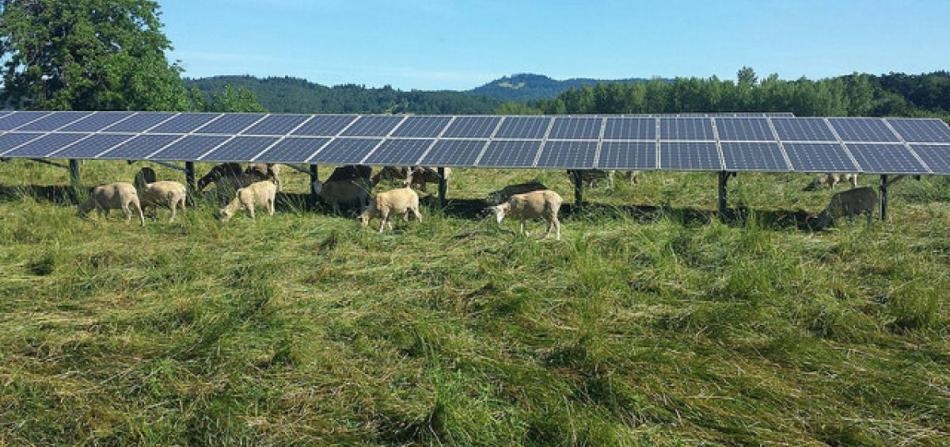Aug 12 2019
A new study by scientists at Oregon State University (OSU) has shown that farmlands are the most productive places on Earth for solar energy.
 (Credit: Oregon State University)
(Credit: Oregon State University)
The study, reported on August 7th, 2019, in Scientific Reports, shows that transformation of <1% of farmland to solar panels could satisfactorily meet global electrical energy demand. Agrivoltaics is the concept of co-developing the same land area for traditional agriculture and solar photovoltaic power.
Our results indicate that there’s a huge potential for solar and agriculture to work together to provide reliable energy. There’s an old adage that agriculture can overproduce anything. That’s what we found in electricity, too. It turns out that 8,000 years ago, farmers found the best places to harvest solar energy on Earth.
Chad Higgins, Study Corresponding Author and Associate Professor, College of Agricultural Sciences, Oregon State University
Higgins continued that their findings could have effects on the existing practice of building huge solar panels in deserts.
He also said, “Solar panels are finicky. Their efficiency drops the hotter the panels get. That barren land is hotter. Their productivity is less than what it could be per acre.”
As part of their study, OSU scientists perused power production data from Tesla, which has set up five huge grid-tied, ground-mounted solar electric panels on farmlands in Oregon State. In particular, they analyzed the data collected every 15 minutes at the 35th Street Solar Array set up in 2013 on the west side of Corvallis Campus of OSU.
They synchronized the data from Tesla with data gathered from microclimate research stations installed at the array that recorded wind speed, mean air temperature, wind direction, relative humidity, incoming solar energy, and soil moisture.
Using these findings, Elnaz Hassanpour Adeh, a recent PhD graduate from OSU’s water resources engineering program and study co-author, designed a model for photovoltaic efficiency as a function of wind speed, air temperature, and relative humidity.
We found that when it’s cool outside the efficiency gets better. If it’s hot the efficiency gets worse. When it is dead calm the efficiency is worse, but some wind makes it better. As the conditions became more humid, the panels did worse. Solar panels are just like people and the weather, they are happier when it’s cool and breezy and dry.
Chad Higgins, Study Corresponding Author and Associate Professor, College of Agricultural Sciences, Oregon State University
Later, using global maps developed from satellite images, Adeh made use of the proposed model across the world, covering 17 classes of universally accepted land area, including classes like croplands, urban, mixed forests, and savanna. Then, the classes were graded from best (croplands) to worst (snow/ice) with respect to the place where a solar panel was most productive.
Subsequently, the model was assessed again to estimate the agrivoltaic potential to fulfill predicted global electric energy demand that has been determined by the World Bank.
Previously, Higgins and Adeh have published a study that reveals that solar panels can increase agricultural production on dry, unirrigated farmland. Their findings suggested that placing solar panels on grassland or agricultural fields could increase the yield of crops.
Stephen Good, an assistant professor in the Department of Biological and Ecological Engineering at OSU, and Marc Calaf, an assistant professor of mechanical engineering at Utah State University, were coauthors of the new study.